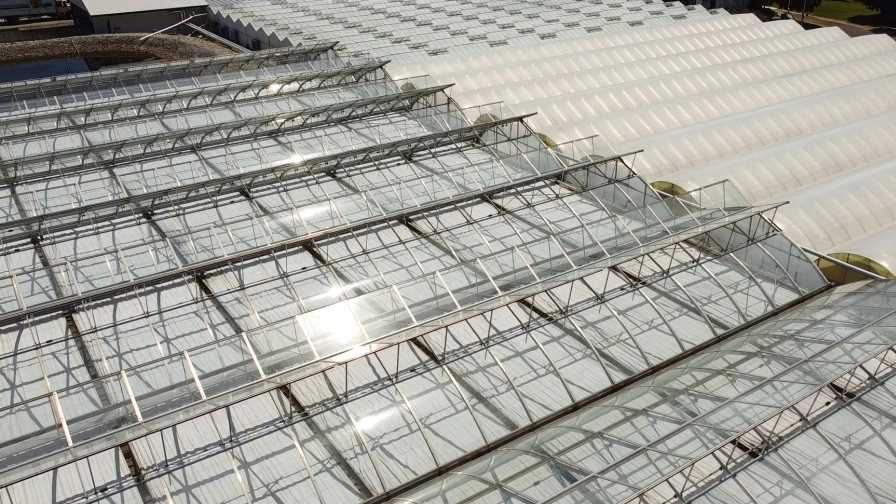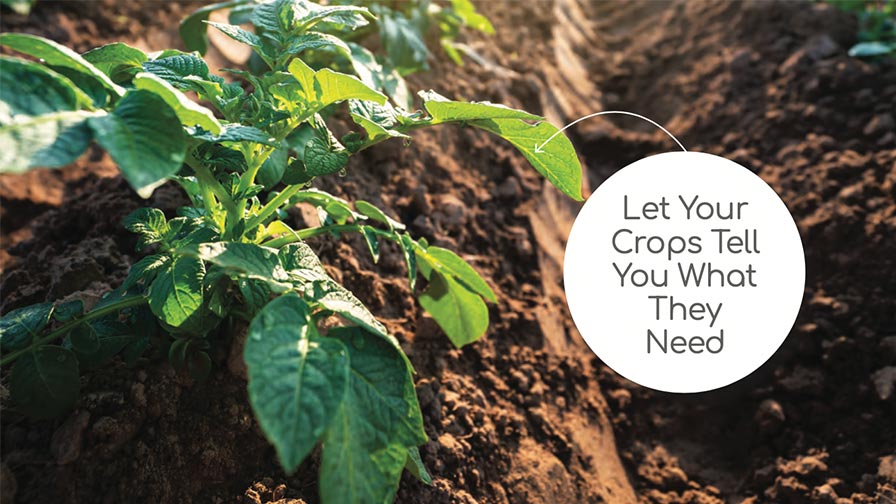Smart Tweaks to Your Vegetable Greenhouse Have Big Rewards

LED lights save energy, but high-pressure sodium lights cost a lot less. Why not use both with a checkerboard pattern in your vegetable greenhouse?
Photo courtesy of Griffin Greenhouse Supplies

In fresh vegetable production, yield is king, and the structure that shelters the crop can make all the difference. When American Vegetable Grower asked manufacturers what growers struggle with most when it comes to structures and coverings, maximizing the transmission of natural light came up as a significant challenge.
Good vegetable growers know that higher light levels increase yield, so they strive to get as much light to the crop as possible. Achieving this goal involves site location, the type of supplemental lighting, and the structure’s design. When everything is done right, the results go a long way toward the bottom line.
“It’s generally accepted that a 1% increase in light intensity will cause a 1% increase in yield,” says Tami Van Gaal, CEA (controlled environment agriculture) Division Leader at Griffin Greenhouse Supplies (GGS). “That 1% yield increase brings a significant revenue increase for an operation.”
Maximize Light Transmission
Taller greenhouse structures with less infrastructure to block light work well for vegetable growing, Van Gaal says. As does light-diffusing coverings, because they aid in directing light to the crop at angles that provide greater penetration through the crop canopy.
However, it is important growers remember that light transmission rates decrease as coverings age. For that reason, keeping up with maintenance is critical to success.
Van Gaal says new covering technologies can enhance even old structures. The new products keep things cleaner from condensation drip and offer more options for spectral control that filter and allow certain spectrums through.

Low walls shrink the area to heat. But high walls buffer weather better, increasing yield.
Photo courtesy of Griffin Greenhouse Supplies
From GGS’ Bob Martin’s viewpoint, a curved-glass greenhouse also offers excellent light for greenhouse vegetable production. And even existing structures can be retrofitted with a few changes to a poly-roof or polycarbonate-covered greenhouse.
Curved-glass structures, when designed right, can virtually eliminate condensation drip. For instance, GGS’ curved structures have built-in condensation tracks and glazing bars to direct condensation outside. Curved-glass greenhouses also have the added benefit of shedding ice and snow faster, which can block much-needed light during the winter months in some areas.
Supplement Lighting
Growers producing crops year-round will also need to think about supplemental light for their structure at some point, especially in Northern areas. Initial investment in equipping a greenhouse structure with lighting — or even making changes to existing supplemental lighting — can be daunting. The perceived cost for supplemental lighting is a hurdle that trips up some cash-strapped growers.
Help is available, Van Gaal says. Keep up with incentive and rebate programs available to you, whether through suppliers or utility companies. Supplier programs are common but often have specific rules. Another consideration? Make sure you have enough power to run your lights. If you don’t, that may limit your choices, Van Gaal says.

Conventional wisdom used to be that lower side walls in the greenhouse meant lower energy bills. But higher walls give crops more of a buffer from winter weather, offsetting any increased costs in better yield.
Photo courtesy of Atlas Greenhouses
Sidewalls as a Weather Buffer
Adding higher sidewalls to a greenhouse can help offset some of the effects from unpredictable weather. That’s because it creates more space inside a controlled-environment structure.
Adding higher sidewalls to a greenhouse, however, will help buffer unpredictable weather.
“For years, we thought lower sidewalls and lower structures meant lower heating bills,” Atlas Greenhouses’ Regional Sales Manager, Chris Kirschner says. “We thought it was a smaller area to heat and respectfully less fuel burned. However, we have now seen real evidence that the larger area of air inside a greenhouse we have, the more area we have buffering plants from outside air temps.”
And, the benefits of higher sidewalls are not just realized during the winter months, according to Kirschner. There is a larger volume of air being turned over year-round in the greenhouse and more room above the plants for heat to rise, mix, and be exhausted, and eventually exchanged with cooler, fresher air. It all results in a better growing environment for the grower.










